From Grassroots to SailGP: The Feeder Series Sailing Needs
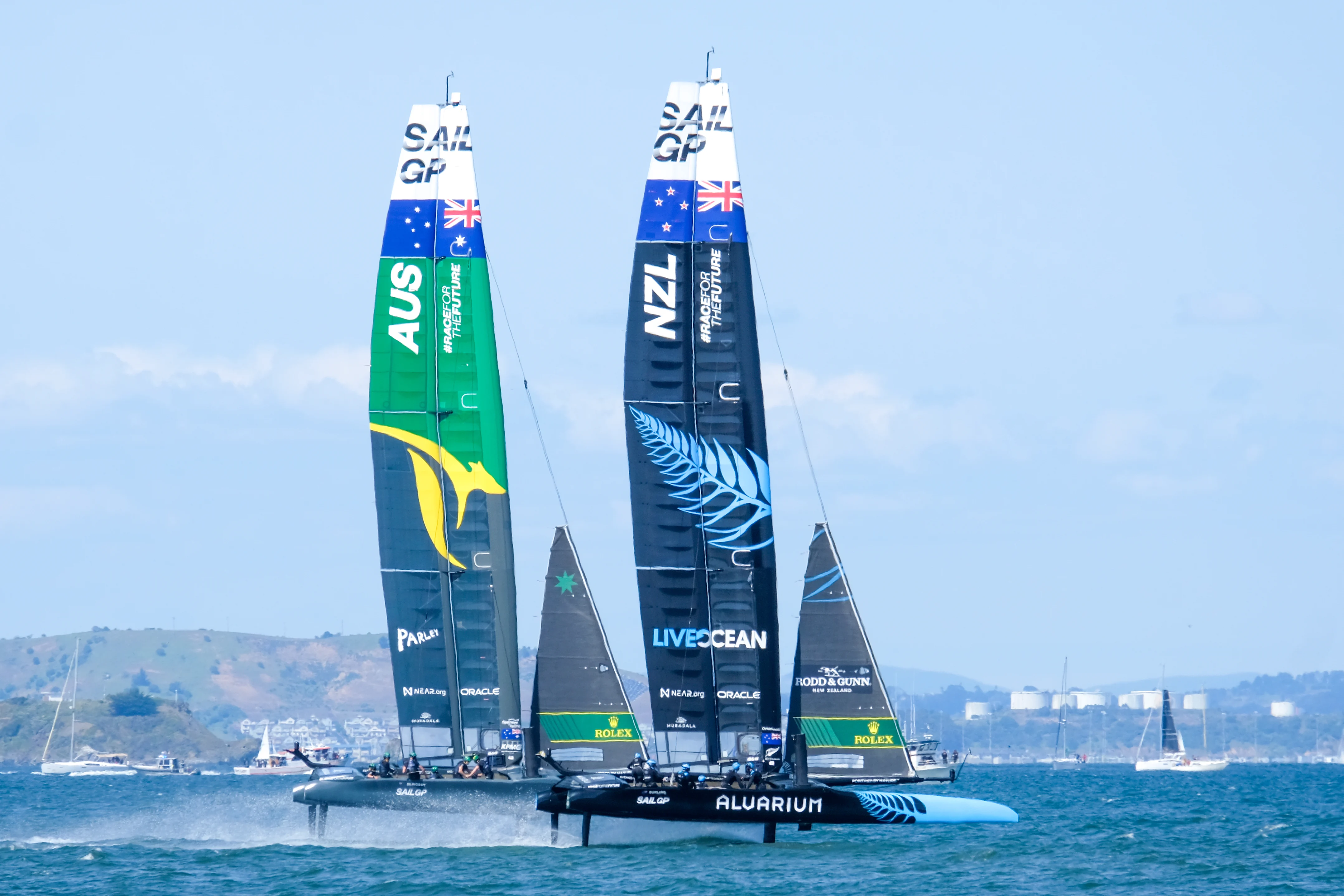
"SailGP Season 3 Grand Final - San Francisco - May 2023 (3270) 33" by Gregory Varnum is licensed under CC BY-SA 4.0 .
Since its inception in 2019, SailGP has changed the landscape of professional sailing. The major events of the Olympics and America’s Cup take place in approximately four-year cycles so the introduction of an annual series has placed significant strain on sailors’ commitments. Although it is possible to participate in all three events, what we have generally seen are the sailors choosing just two; usually America’s Cup and SailGP. Peter Burling, Blair Tuke, and Quentin Delapierre are examples of top sailors who have chosen to retire from Olympic sailing in favor of other professional commitments.
With such a monumental shift on the sport, I have been thinking about what is the best pathway and have devised a list of boats and series I think best resembles an official ladder for young sailors to progress through. I have taken inspiration from motorsport pathways, in particular that of Formula 1, WRC and WEC which all have well-established and successful feeder series and I will be drawing parallels to. What they all have in common is that the feeder series equipment are as close to the premier leagues’ as possible. Applying that concept to the F50, there is an emphasis on foiling catamarans with a focus on the teams and crew work.
Formula 4: Waszp
The Waszp has a rich history in the SailGP as a partner in the Inspire Racing program alongside the F50s at each event. The Waszp aims to attract youth sailors into making the transition from classical sailing to foiling, much like how to Formula 4 car is a driver’s first taste of high downforce open-wheel racing.
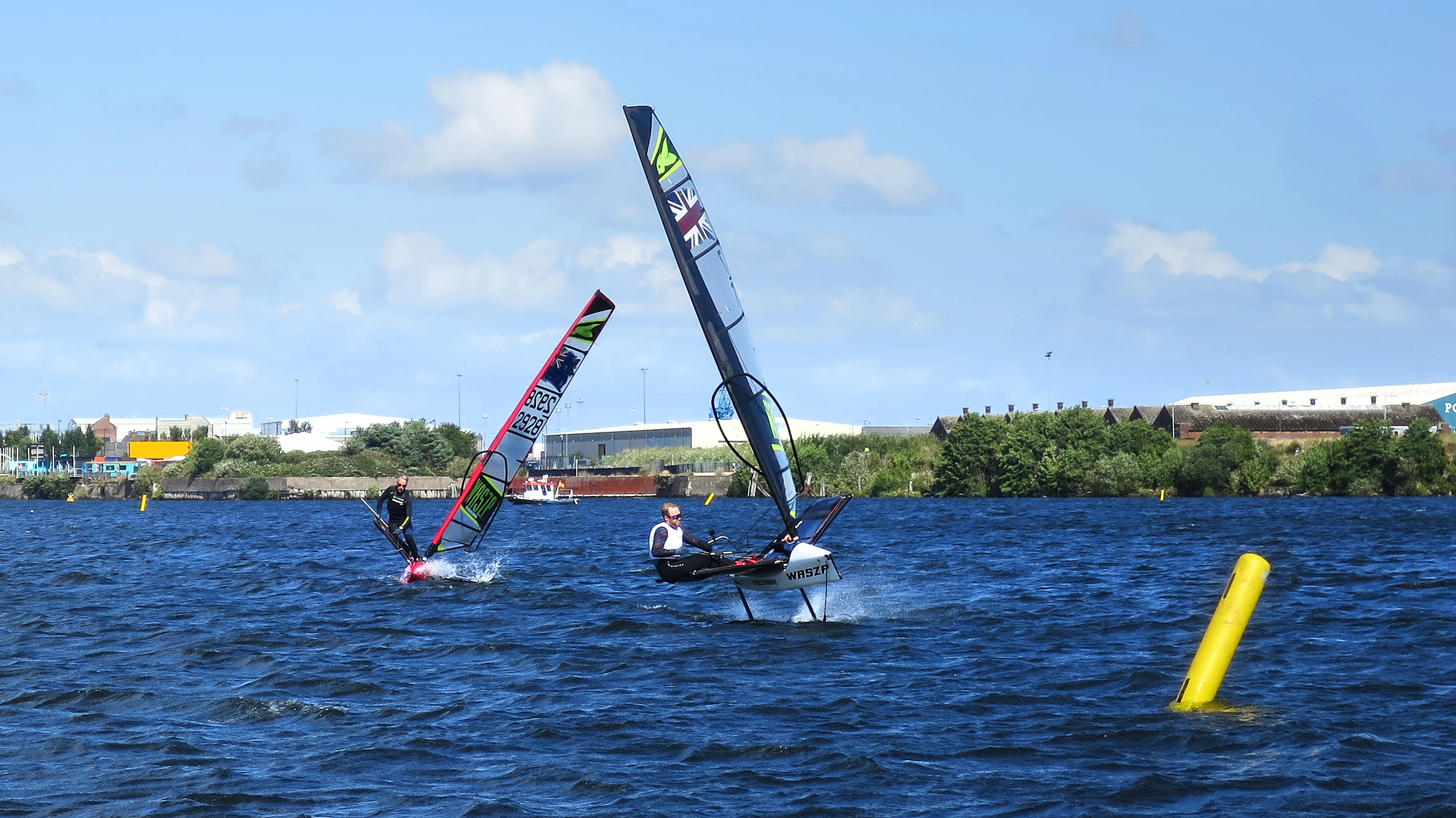
"WASZP racing" by Capt' Gorgeous is licensed under CC BY 2.0 .
Formula Regional: Flying Phantom or Nacra F20 FCS or Goodall Design Foiling Viper
For this next spot, I have identified three possible candidates. I very much like the idea of the several concurrent region-based championships used by Formula Regional as a way to encourage more participation and limit involved costs. While there is no active series I am aware of racing these designs, I believe the now defunct SuperFoiler Grand Prix series should have utilised one of these high-performance boats to eliminate the cost of R&D a new custom design and increase participation with a boat teams could go and purchase. The gap from the Waszp to one of these boats is possibly biggest step up in performance; transitioning from a one-person, single-sail automated foiler to a larger, two-crewed, three-sail, four-foil manual boat controlled from the trapeze. I’ll now talk about each one individually.
The Flying Phantom, in my view, represents the pinnacle of small foiling vessels capable of speeds in excess of 30 knots. The Phantom once had its own racing circuit, the FP Series, as part of the Extreme Sailing Series. It was also the boat of choice for the Red Bull Foiling Generation. For many years, it served as a key training boat for America’s Cup teams. Needless to say it is a serious racing machine. There is a catastrophic problem with the boat: Phantom International company went into liquidation in early 2020 so the boats are no longer produced or supported. Nevertheless, they were still raced as part of the Swiss FP Series and Foiling Week as late as 2024.

The Nacra F20 Carbon FCS follows a similar philosophy to the Flying Phantom: to be the ultimate foiling machine. The F20 is even larger than the Phantom but is still being built and supported by Nacra. Like the Phantom, the boat uses a three-point foiling system to reduce drag now coupled with a decksweeper main, jib and spinnaker. It too was also used as a training boat for America’s Cup teams. While the F20 may be too large and extreme for this position in the pathway, it is still worth consideration.
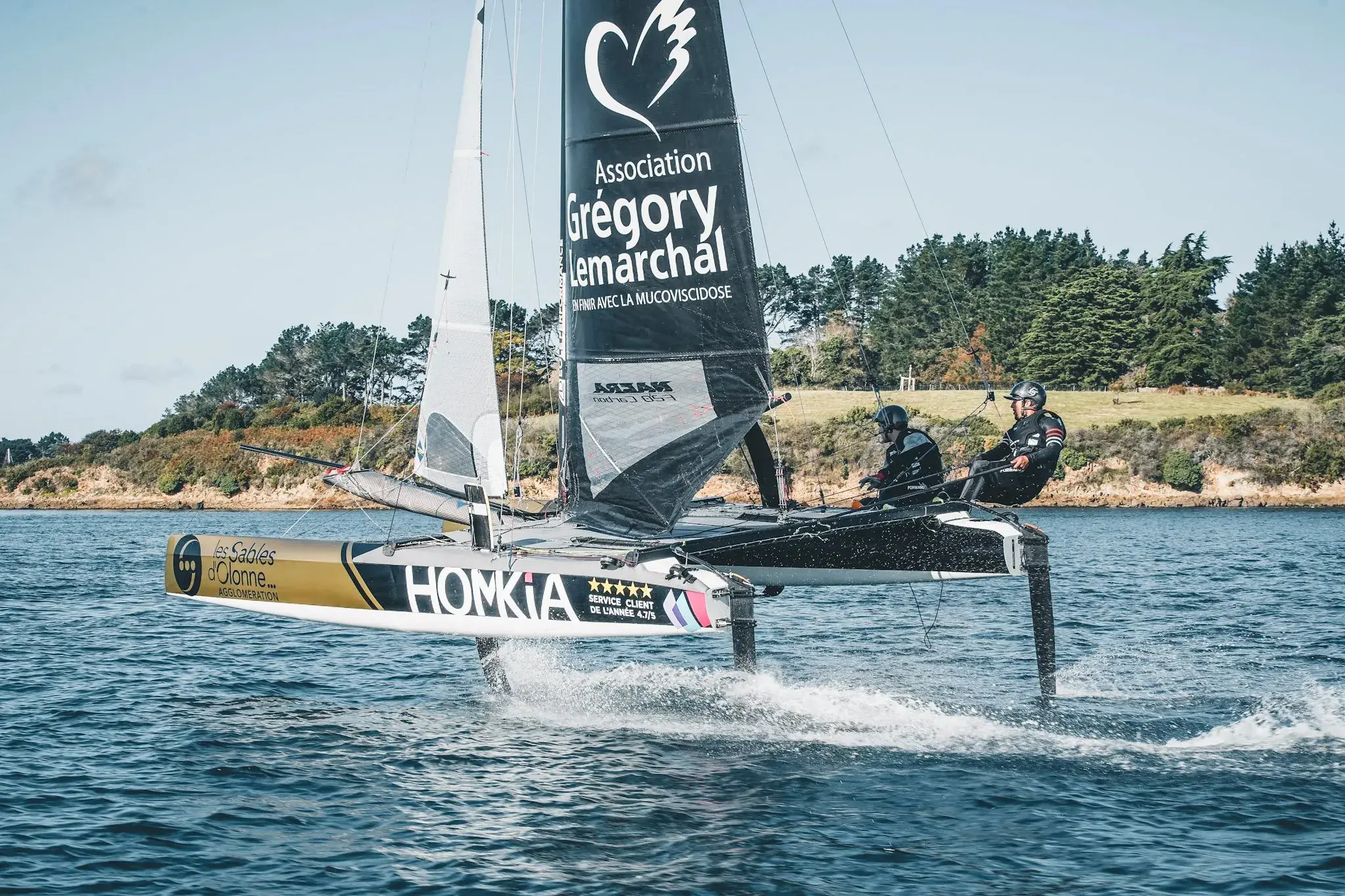
The Foiling Viper from Goodall Design is the smallest entry in this segment, likely the cheapest option and the most modern design of the three. For the record, I own one so I can speak from experience about how brilliant of a boat it is. While the viper is available as a convertible platform, I will only speak of its foiling capabilities. The Viper draws from the latest innovations in the A-Class Catamaran, equipped with cutting-edge technology The boat is fitted with Z-foils which can be controlled in unison by the rake control. The rudders come with six degrees of differential available for control. Together, this ensures the boat is capable of flying upwind and downwind and that fine adjustment is available to the crew at all times. My personal best on the boat is 19 knots upwind and 27 knots downwind. The Z-foils take a lot of balance and precision sailing to extract the most performance from them so teams will have their hands full as they push the limits.
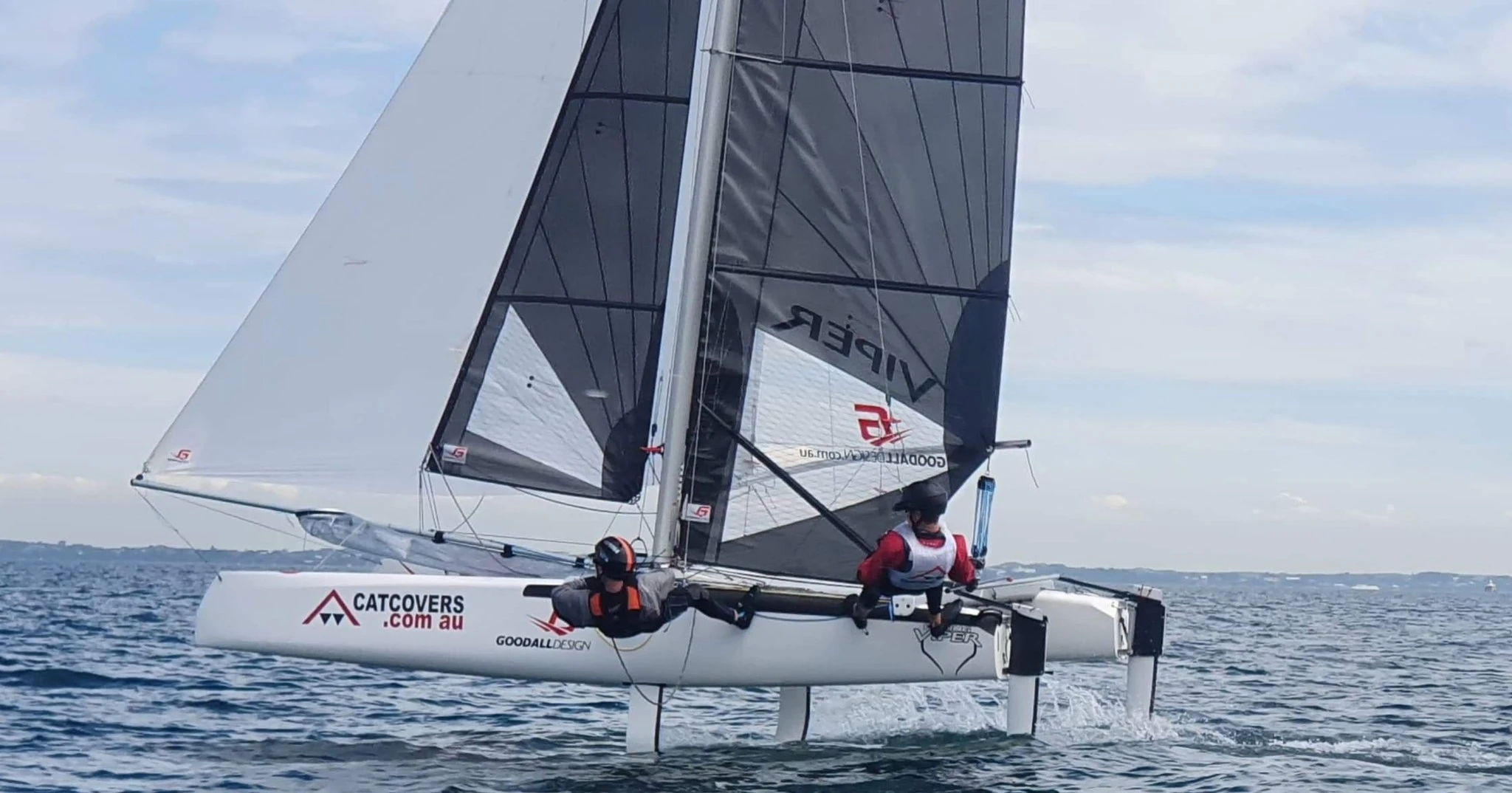
Formula 3: ETF26
The ETF26 Series is a well-established racing series which already has big teams involved such as New Zealand’s Live Ocean Racing, Rockwool Denmark and Orient Express. The ETF marks the progression from small off-the-beach (OTB) boats to larger classes with more crew. Born in 2016 and inspired by Groupama’s dominating C-Class design, the boat only weighs 350 kgs. In 2024, the boat was upgraded with newly designed foils, rudders and sails equipped enabling true full foiling at all points of sail.
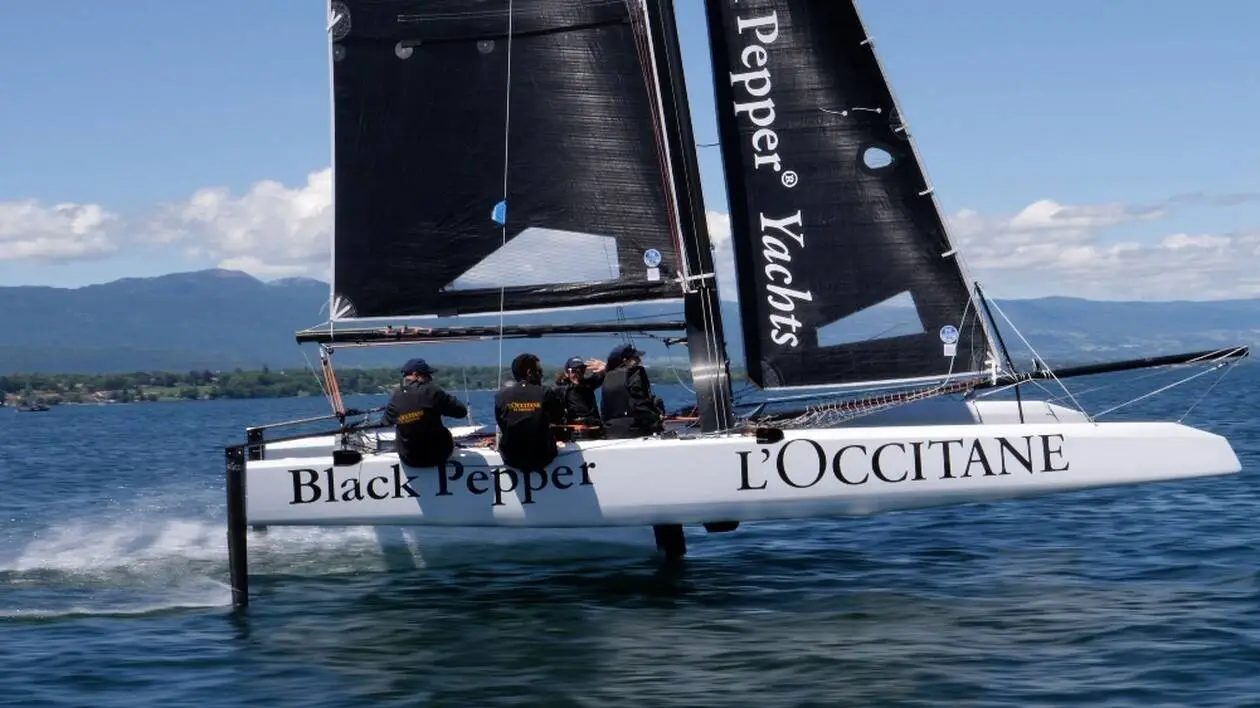
Formula 2: GC32 or TF35
Finally, for penultimate step on the foiling ladder, there are two classes - the GC32 and TF35. I have found it difficult to choose between the two classes despite the fact that they take very different approaches; they almost complement each other.
The GC32 is a stalwart in the foiling space, with nearly every professional foiling team owning and/or racing one at some point since its debut in 2014. The GC was a part of two top-tier racing series in the Extreme Sailing Series and the GC32 Racing Tour. The former ended in 2018 while the latter has been dormant since 2023. The GC has recorded a top speed of 42.7 knots! The design philosophy is unique for a foiling boat of its size, with all systems manually powered by ropes. This means there is no hydraulics or electronics at all. The foiling is purely manual with no automatic flight control.
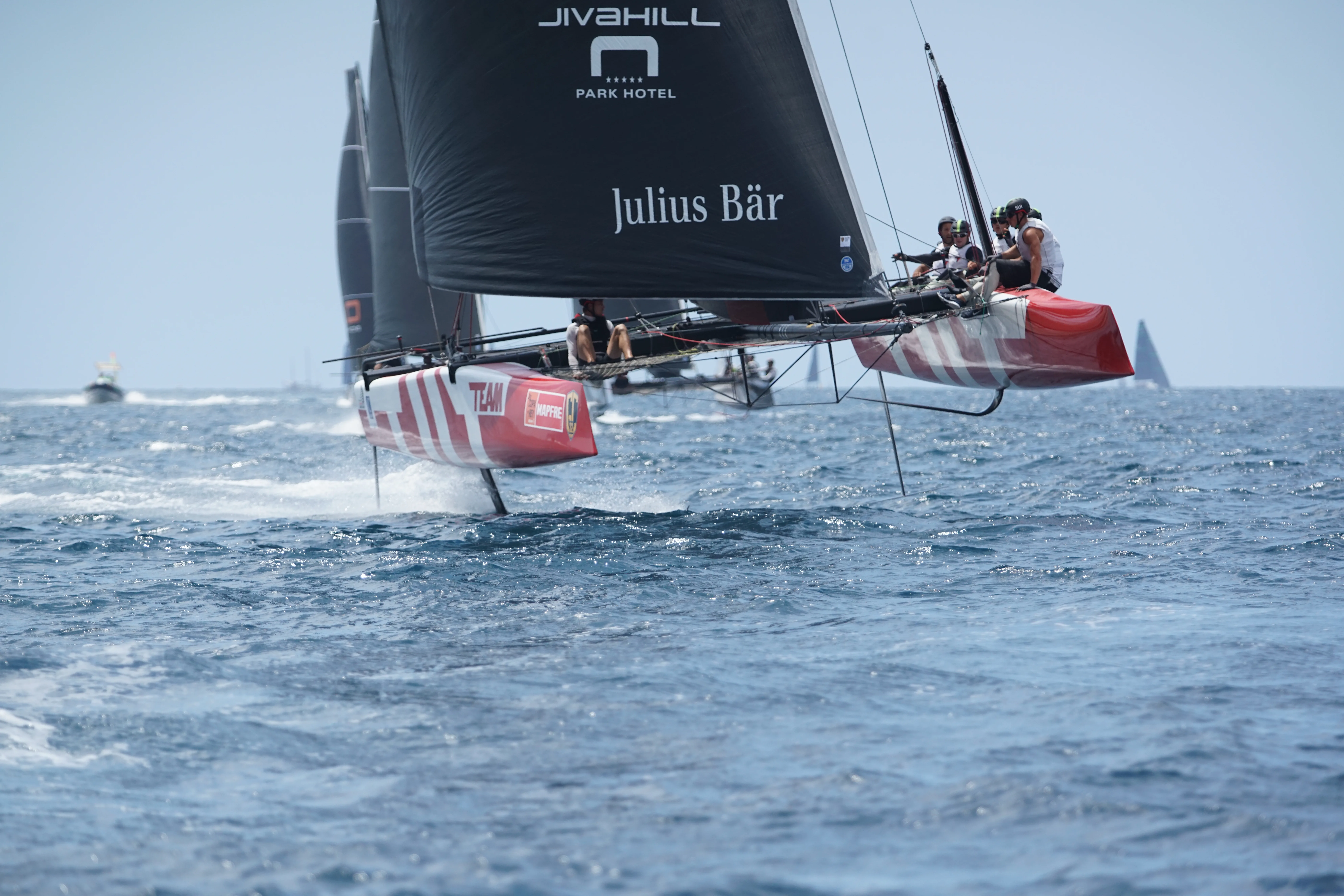
"DSC09726" by martinwcox is licensed under CC BY 2.0 .
The TF35 on the other hand is a more modern design with a more high-tech attitude. The boat utilises T-foils which aligns well with the new foils used on the F50s for this year, but the flight control is fully automated. Additionally, the boat has a much larger sail area than the GC as it is designed for racing on Lake Geneva although the class has plans to sail throughout Europe. It also claims a top speed of over 40 knots. Like the GC, the class boasts top-tier teams such as Alinghi, Spindrift and Realteam.
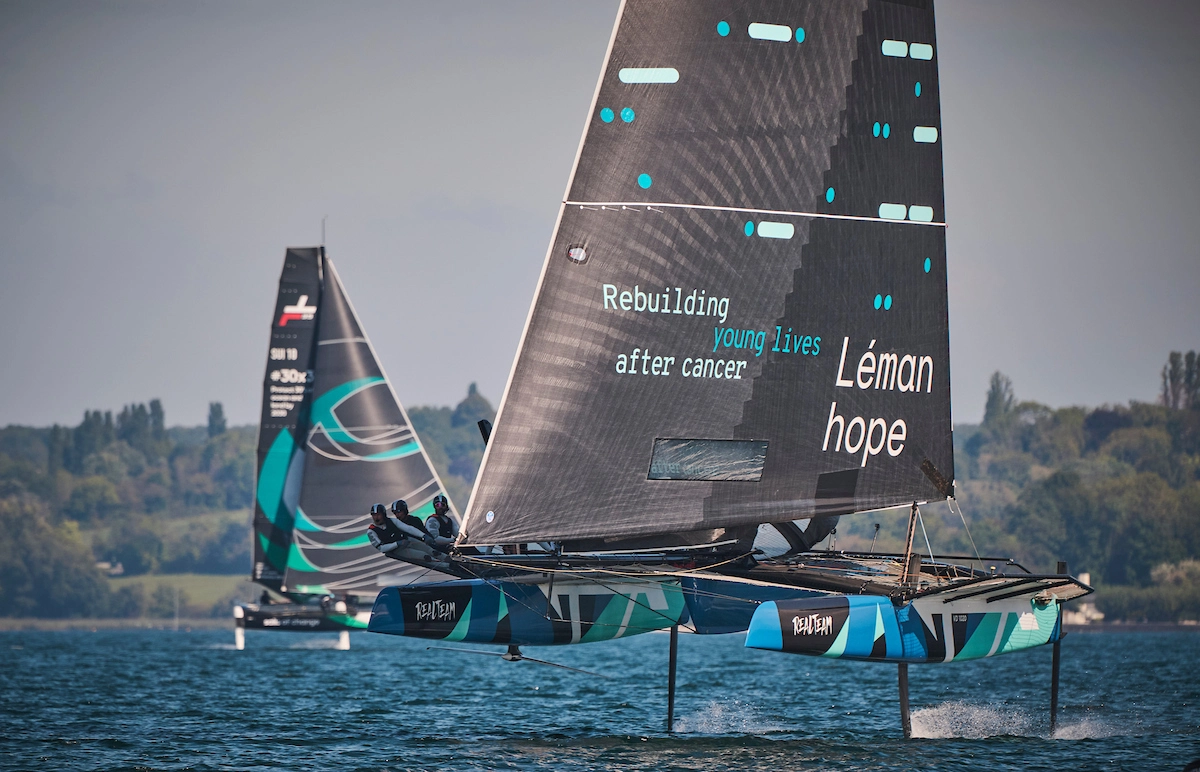
Formula 1: SailGP
And now, we move on to the big leagues. A hypothetical athlete following this proposed path would have been competitively foiling since the age of around 10, possibly even younger. They have spent the better part of a decade honing their skills on the most difficult type of foiling boats best preparing them for the challenges that come with racing the F50, whatever the position onboard may be.
Conclusion
If we take a look at the current landscape of SailGP, there are some interesting patterns worth noting. New sailors entering the sport tend to struggle if they do not come from a high performance background. Consider the Spanish team who largely struggled with Jordi Xammer on the helm, no doubt a talented dinghy sailor, even despite his experience in Extreme Sailing Series and Youth America’s Cup. When Diego Botin was brought in, they won the following season. Similarly, Taylor Canfield has struggled with results for the USA team. I think these examples show how hard it is to make the transition from top-tier dinghy and keelboat racing to foiling catamarans, it is rare to be able to make a smooth transition. 49er, moths and Nacra 17s are the common place classes. This was not always the case, with Tom Slingsby and Ben Ainslie being two high-profile example but the circumstances were very different. Foiling was essentially brand new in 2012, meaning everyone had to start from scratch. Being a part of the America’s Cup meant that unlimited testing time could be conducted, a luxury that does not exist in the SailGP series.
It’s not just Formula 1 that has an integrated global development pathway—MotoGP, WRC, and WEC all have relevant junior categories. Even top flight GT racing and national touring car series have ladders. It’s an important part of all sports, particularly in technology-driven fields like motorsport and sailing. I believe this proposed pathway provides athletes with the most relevant and high-performance boats available.